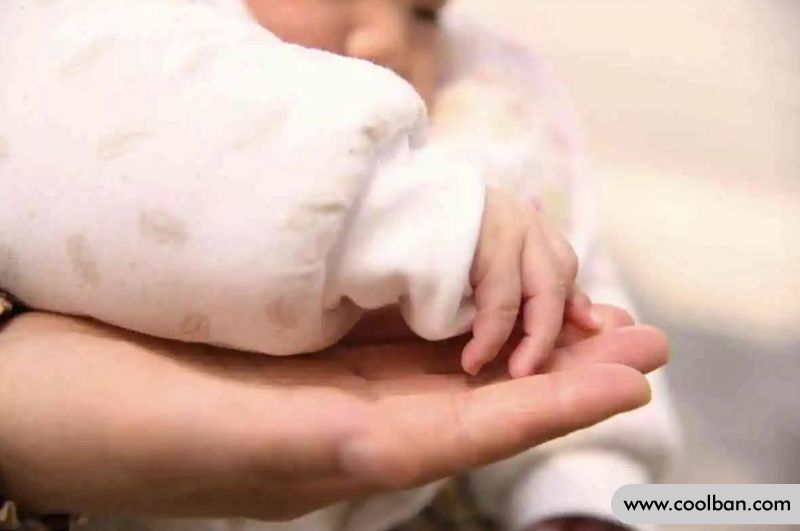How to prevent and treat rickets?
2022-04-28
In patients with rickets, the sternum may protrude forward, or the sternum, costal cartilage and part of the ribs in the middle of the anterior chest may be deformed backward to form a funnel shape, or the wrists and ankles may be enlarged, and the lower limbs may be deformed, showing an "O"-shaped leg or "X" shaped legs. In addition to these symptoms, what are the symptoms and causes of rickets, as well as how to treat them and how to prevent them? Let's find out together.

The cause of rickets
The full name of rickets is vitamin D deficiency rickets, which is a metabolic bone disease caused by the lack of vitamin D in the human body and the disorder of calcium and phosphorus metabolism in the body. Rickets in infants and young children is mainly caused by vitamin D deficiency. Breastfed or formula-fed infants, as well as young children who eat 400ml of milk per day, are usually not deficient in calcium and do not need additional calcium supplements.
When the body has enough vitamin D, it tends to promote the body's absorption of calcium and phosphorus, because the development of bones is inseparable from calcium and phosphorus. Vitamin D plays a decisive role in the metabolism of calcium and phosphorus. Other hormones in the body such as parathyroid hormone and calcitonin actively participate in the metabolism of calcium and phosphorus. The interaction between hormones maintains the normal metabolism of calcium and phosphorus and the normal development of bones. . Therefore, in the treatment of rickets in infants and young children, vitamin D supplementation is very important, and its sources can be sun exposure, food intake and vitamin D preparations.

Symptoms of rickets
Symptom 1: 3-6 months baby
In the bones in the center of the occipital and parietal bones, a ping-pong ball-like elastic sensation occurs called a craniomalacia.
Symptom 2: Children around 1 year old
In the case of rickets, the symmetrical round process of the forehead and top of the skull, called a square skull, can be seen in the chest at the junction of the ribs and the costal cartilage. The eversion protruding from the breast and costal margins. Because of weak limbs and back muscles, children sit, stand, and walk later than healthy children and fall more easily.
Symptom 3: Children over 1 year old
The anterior fontanelle is too large and the closure is delayed (normal infants can usually close at about 18 months), and the two lower limbs may be bent inward or outward when walking, which belongs to O-shaped legs or X-shaped legs. In addition, children have delayed teething and are prone to tooth decay.
Early symptoms of rickets
Rickets mostly occurs in children aged 2-3 years, and the first onset is more common in infants around 3 months old. After the occurrence of rickets, the symptoms are mainly mental symptoms. The early symptoms are sweating, crying, sleeplessness, and easy to startle. The head is itchy due to the sweating of the head. baldness.
The above performance can only indicate that parents and children may have rickets, and they need to take their children to the hospital for further examinations, such as blood biochemical examinations, urinary calcium measurement, etc. Although rickets is mainly due to lack of vitamin D in the body, it is not appropriate to give children a large amount of vitamin D to prevent vitamin D poisoning. If the disease progresses further, it can be seen that the child's muscles are relaxed and weak, especially the relaxation of the abdominal wall and intestinal wall muscles, causing the child to have flatulence and bloating like a frog's belly. The most important changes in children with rickets are symptoms due to bone lesions that are characteristic of rickets.

Treatment method for rickets
Rickets is a common disease in infants and young children. Therefore, for the treatment of rickets, parents need to have a good grasp. Only by understanding, can they give their children correct care and treatment, so that the children can get rid of the disease as soon as possible. Here are four ways to treat rickets:
Method 1: Take an appropriate amount of calcium to supplement calcium deficiency. Calcium should be taken concurrently with vitamin D treatment.
Method 2: Vitamin D supplementation. Started with daily oral vitamin D, and changed to prophylactic dose after 1 month. It is taken orally during the stimulation period, and it is changed to the preventive dose after 1 month of continuous service. If oral administration cannot be adhered to or diarrhea occurs, intramuscular injection of vitamin D, high-dose shock therapy, and oral preventive doses can be used after 1 month. Before intramuscular injection, oral calcium is administered for 4 to 5 days to avoid iatrogenic hypocalcemic convulsions.
Method 3: Orthopedic skeletal therapy. Take active and passive exercises to correct skeletal deformities. Mild skeletal deformities can be corrected by themselves after treatment or during growth. Physical exercise should be strengthened, and some active or passive exercise methods can be used to correct them, such as push-ups or stretches. The chest action expands the chest, corrects mild chicken breast rib valgus, etc. Severe skeletal deformities should be corrected surgically, and may be considered after the age of 4.
Method 4: Increase the chance of sun exposure. Adhere to breastfeeding, supplement foods with high vitamin D content (liver, egg yolk, etc.) in time, go outdoors more, and increase the chance of direct sunlight. Do not make children sit or stand for a long time in the stimulation stage to prevent bone deformities.

Prevention of rickets
If a child develops rickets, it will have a great impact on the healthy growth of the child. It is very important to do a good job in the prevention of rickets. Prevention of rickets can be done in four ways:
Prevention method 1: Pay attention to the health care of pregnant mothers. Pregnant mothers need to strengthen nutrition, and usually supplement foods rich in protein and vitamin D, such as eggs, lean meat, animal liver, etc. Pay attention to proper sun exposure and take vitamin D preparations under the guidance of a doctor.
Prevention Method 2: Breastfeeding. Breast milk not only contains antibodies, but also improves the baby's body immunity. At the same time, the proportion of calcium and phosphorus in breast milk is appropriate, so that vitamin D and calcium in breast milk can be easily absorbed by the baby, reducing the risk of rickets in the baby.
Prevention method 3: Proper sun exposure. Sun exposure is both economical and effective for the prevention and treatment of rickets. Generally, sun exposure for about 2 hours a day can meet the needs of children for vitamin D. Therefore, a child can start sunbathing after the full moon and gradually increase the amount of sunbathing each day. But pay attention: it is best to stay in the shade in summer and avoid direct sunlight; in winter, do not bask in the sun through the glass to avoid ultraviolet rays being absorbed.
Prevention method 4: Vitamin D supplementation. Children's daily physiological requirement of vitamin D is 400-600 units/day. If this dose can be guaranteed, the occurrence of rickets can be prevented. Mixed-fed children should start vitamin D supplementation 2 weeks after birth. Before supplementation, parents should carefully calculate the daily dose of vitamin D intake through formula milk or fortified milk powder, or decide the supplementary dose under the guidance of a doctor. In addition, children with malnutrition, physical weakness, and rapid growth and development should pay attention to vitamin D supplementation to prevent rickets.

The cause of rickets
The full name of rickets is vitamin D deficiency rickets, which is a metabolic bone disease caused by the lack of vitamin D in the human body and the disorder of calcium and phosphorus metabolism in the body. Rickets in infants and young children is mainly caused by vitamin D deficiency. Breastfed or formula-fed infants, as well as young children who eat 400ml of milk per day, are usually not deficient in calcium and do not need additional calcium supplements.
When the body has enough vitamin D, it tends to promote the body's absorption of calcium and phosphorus, because the development of bones is inseparable from calcium and phosphorus. Vitamin D plays a decisive role in the metabolism of calcium and phosphorus. Other hormones in the body such as parathyroid hormone and calcitonin actively participate in the metabolism of calcium and phosphorus. The interaction between hormones maintains the normal metabolism of calcium and phosphorus and the normal development of bones. . Therefore, in the treatment of rickets in infants and young children, vitamin D supplementation is very important, and its sources can be sun exposure, food intake and vitamin D preparations.

Symptoms of rickets
Symptom 1: 3-6 months baby
In the bones in the center of the occipital and parietal bones, a ping-pong ball-like elastic sensation occurs called a craniomalacia.
Symptom 2: Children around 1 year old
In the case of rickets, the symmetrical round process of the forehead and top of the skull, called a square skull, can be seen in the chest at the junction of the ribs and the costal cartilage. The eversion protruding from the breast and costal margins. Because of weak limbs and back muscles, children sit, stand, and walk later than healthy children and fall more easily.
Symptom 3: Children over 1 year old
The anterior fontanelle is too large and the closure is delayed (normal infants can usually close at about 18 months), and the two lower limbs may be bent inward or outward when walking, which belongs to O-shaped legs or X-shaped legs. In addition, children have delayed teething and are prone to tooth decay.
Early symptoms of rickets
Rickets mostly occurs in children aged 2-3 years, and the first onset is more common in infants around 3 months old. After the occurrence of rickets, the symptoms are mainly mental symptoms. The early symptoms are sweating, crying, sleeplessness, and easy to startle. The head is itchy due to the sweating of the head. baldness.
The above performance can only indicate that parents and children may have rickets, and they need to take their children to the hospital for further examinations, such as blood biochemical examinations, urinary calcium measurement, etc. Although rickets is mainly due to lack of vitamin D in the body, it is not appropriate to give children a large amount of vitamin D to prevent vitamin D poisoning. If the disease progresses further, it can be seen that the child's muscles are relaxed and weak, especially the relaxation of the abdominal wall and intestinal wall muscles, causing the child to have flatulence and bloating like a frog's belly. The most important changes in children with rickets are symptoms due to bone lesions that are characteristic of rickets.

Treatment method for rickets
Rickets is a common disease in infants and young children. Therefore, for the treatment of rickets, parents need to have a good grasp. Only by understanding, can they give their children correct care and treatment, so that the children can get rid of the disease as soon as possible. Here are four ways to treat rickets:
Method 1: Take an appropriate amount of calcium to supplement calcium deficiency. Calcium should be taken concurrently with vitamin D treatment.
Method 2: Vitamin D supplementation. Started with daily oral vitamin D, and changed to prophylactic dose after 1 month. It is taken orally during the stimulation period, and it is changed to the preventive dose after 1 month of continuous service. If oral administration cannot be adhered to or diarrhea occurs, intramuscular injection of vitamin D, high-dose shock therapy, and oral preventive doses can be used after 1 month. Before intramuscular injection, oral calcium is administered for 4 to 5 days to avoid iatrogenic hypocalcemic convulsions.
Method 3: Orthopedic skeletal therapy. Take active and passive exercises to correct skeletal deformities. Mild skeletal deformities can be corrected by themselves after treatment or during growth. Physical exercise should be strengthened, and some active or passive exercise methods can be used to correct them, such as push-ups or stretches. The chest action expands the chest, corrects mild chicken breast rib valgus, etc. Severe skeletal deformities should be corrected surgically, and may be considered after the age of 4.
Method 4: Increase the chance of sun exposure. Adhere to breastfeeding, supplement foods with high vitamin D content (liver, egg yolk, etc.) in time, go outdoors more, and increase the chance of direct sunlight. Do not make children sit or stand for a long time in the stimulation stage to prevent bone deformities.

Prevention of rickets
If a child develops rickets, it will have a great impact on the healthy growth of the child. It is very important to do a good job in the prevention of rickets. Prevention of rickets can be done in four ways:
Prevention method 1: Pay attention to the health care of pregnant mothers. Pregnant mothers need to strengthen nutrition, and usually supplement foods rich in protein and vitamin D, such as eggs, lean meat, animal liver, etc. Pay attention to proper sun exposure and take vitamin D preparations under the guidance of a doctor.
Prevention Method 2: Breastfeeding. Breast milk not only contains antibodies, but also improves the baby's body immunity. At the same time, the proportion of calcium and phosphorus in breast milk is appropriate, so that vitamin D and calcium in breast milk can be easily absorbed by the baby, reducing the risk of rickets in the baby.
Prevention method 3: Proper sun exposure. Sun exposure is both economical and effective for the prevention and treatment of rickets. Generally, sun exposure for about 2 hours a day can meet the needs of children for vitamin D. Therefore, a child can start sunbathing after the full moon and gradually increase the amount of sunbathing each day. But pay attention: it is best to stay in the shade in summer and avoid direct sunlight; in winter, do not bask in the sun through the glass to avoid ultraviolet rays being absorbed.
Prevention method 4: Vitamin D supplementation. Children's daily physiological requirement of vitamin D is 400-600 units/day. If this dose can be guaranteed, the occurrence of rickets can be prevented. Mixed-fed children should start vitamin D supplementation 2 weeks after birth. Before supplementation, parents should carefully calculate the daily dose of vitamin D intake through formula milk or fortified milk powder, or decide the supplementary dose under the guidance of a doctor. In addition, children with malnutrition, physical weakness, and rapid growth and development should pay attention to vitamin D supplementation to prevent rickets.
